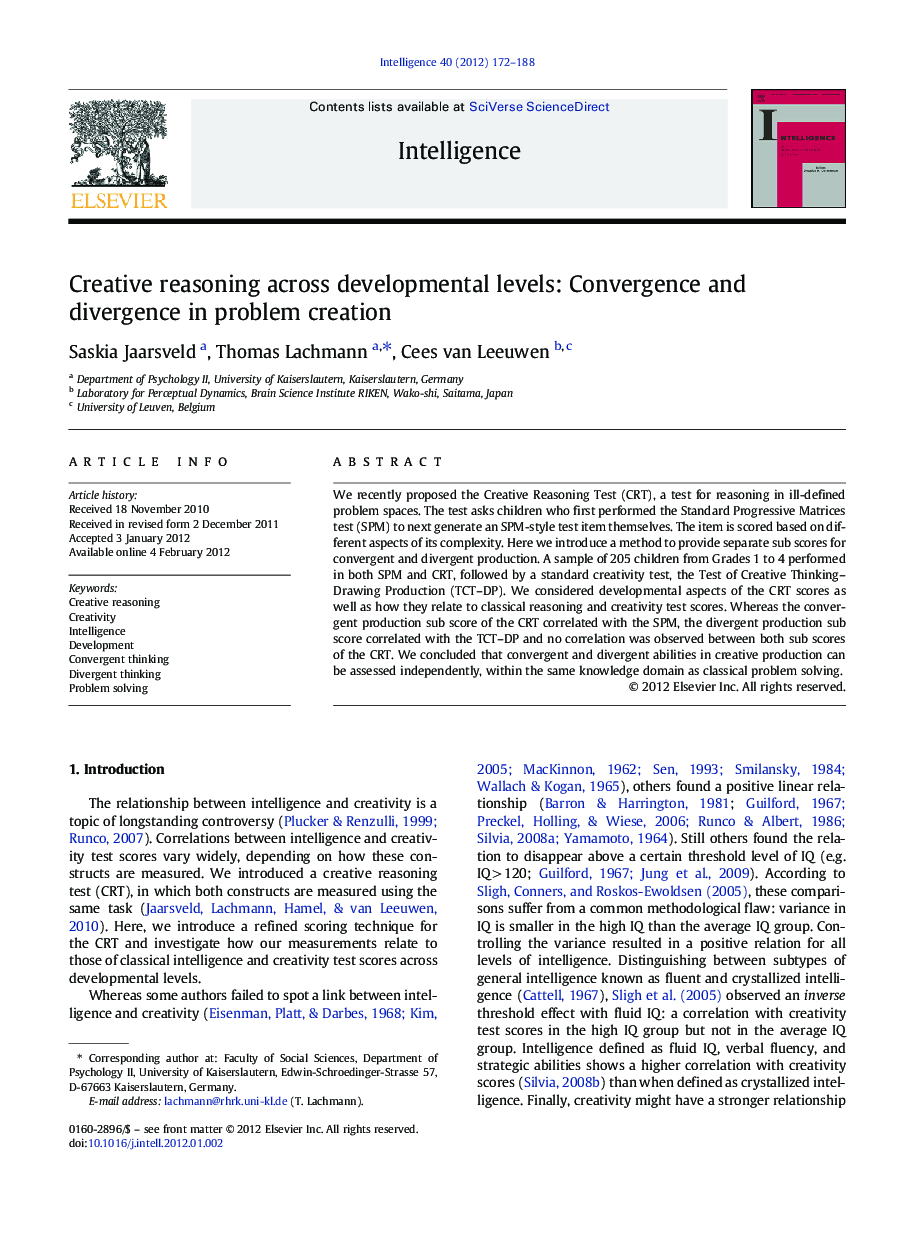| Article ID | Journal | Published Year | Pages | File Type |
|---|---|---|---|---|
| 929107 | Intelligence | 2012 | 17 Pages |
We recently proposed the Creative Reasoning Test (CRT), a test for reasoning in ill-defined problem spaces. The test asks children who first performed the Standard Progressive Matrices test (SPM) to next generate an SPM-style test item themselves. The item is scored based on different aspects of its complexity. Here we introduce a method to provide separate sub scores for convergent and divergent production. A sample of 205 children from Grades 1 to 4 performed in both SPM and CRT, followed by a standard creativity test, the Test of Creative Thinking–Drawing Production (TCT–DP). We considered developmental aspects of the CRT scores as well as how they relate to classical reasoning and creativity test scores. Whereas the convergent production sub score of the CRT correlated with the SPM, the divergent production sub score correlated with the TCT–DP and no correlation was observed between both sub scores of the CRT. We concluded that convergent and divergent abilities in creative production can be assessed independently, within the same knowledge domain as classical problem solving.
► We related the products of cognition operating in well and ill defined problems. ► We compared solving and creating of relations between geometrical components. ► Products were scored on the relation's complexity and component's transformations. ► In each grade, the relations preferably applied contrasted in solving and creating. ► Reasoning abilities lead to different performances in well and ill defined problems.
